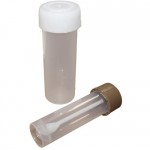Treating Diabetes With Stool Transplants?
Wednesday, September 22, 2010 This morning at the EASD in Stockholm, I attended a session with the title, “Manipulating the Gut to Treat Metabolism”.
This morning at the EASD in Stockholm, I attended a session with the title, “Manipulating the Gut to Treat Metabolism”.
In the first presentation, Alberto Morabito (Italy) and colleagues discussed a meta-analysis showing the beneficial effect of bariatric surgery on cardiovascular mortality. However, as pointed out by many discussants, this data is confounded by lack of ransomised studies, poor controls, and other methodological shortcomings. Nevertheless, the impact of bariatric surgery on mortality is so obvious that it is difficult to doubt the positive effect.
Ji Yan and colleagues (Sweden) examined the effect of gastric bypass surgery on the methylation of various mediators of metabolic control measured in skeletal muscle biopsies. The researchers found changes in DNA methylation patterns of various genes, which can significantly alter their expression and function. Of course, as patients undergoing surgery also show profound changes in their dietary intake patterns, it is not clear from these studies whether or not the observed changes are indeed simply related to weight loss or other factors induced by surgery.
Sergio Vencio and colleagues (Brazil) examined the effect of ileal interposition on insulin secretion and insulin sensitivity in diabetic patients with a BMI less than 35. Improvements in glucose tolerance, insulin sensitivity, and both first and second-phase insulin secretion was markedly improved within the first few months after surgery (i.e. with minimal if any weight loss). The study shows that even diabetic patients below the current cut-offs for bariatric surgery (i.e. with a BMI less than 35) show marked improvements in metabolic control after gut surgery. Whether or not these improvements are related to changes in incretin secretion remains unclear but seems highly likely.
Claudia Ress and colleagues (Austria) examined the expression of Apo-lipoprotein 5 expression in liver biopsies before and after bariatric surgery. Despite an almost 6 pt drop in BMI units and a marked decrease in hepatic steatosis, there was no significant change in plasma lipids. However, Apo-5 expression in the liver was substantially decreased. Using in vitro knockdown of Apo-5, they also showed that reducing Apo-5 reduces intracellular triglyceride accumulation in liver cells – suggesting that this molecule may play a role in fatty liver disease.
But the most novel and intriguing studies were the following:
Thomas Adrian and colleagues (United Arab Emirates) presented data on the concept that a “bile salt brake” on the enteroendocrine L-cells in the distal gut (rectum) may provide a novel target for improving diabetes. These L-cells secrete GLP-1, PYY and oxyntomodulin, three gut peptides that all increase satiety. Interestingly, the release of these enterohormones is stimulated by bile salts, mediated through the TGR5 receptor. In a study involving 10 obese individuals with type 2 diabetes, the researchers demonstrated that rectal infusion of taurocholate (a bile salt) results in a dose-related increase in plasma levels of PYY and GLP-1 as well as a significant reduction in subsequent food intake (75 min after the end of the infusion). These observations not only prove the existence of the “bile salt brake” but also so that this system could possibly be harnessed to affect food intake and glucose metabolism (e.g. rectal TGR5 agonist suppositories, inhibition of ileal bile salt reabsorption, etc.).
And finally, in this session, Anne Vrieze and colleagues (Netherlands, France, Finland) presented a fascinating study on the transplantation of gut microbes from lean donors to obese subjects with the metabolic syndrome. Fecal transplantation has been previously assessed as a way to treat patients with recurrent clostridium difficile infections. In the present study, faeces from lean subjects (first screened for parasites and other infections) was “transplanted” to obese volunteers after bowel lavage. Controls consisted of “autotransplantation” of stool samples. While stool “allotransplanation” did not change weight, energy expenditure or body weight, it had a marked effect on systemic and hepatic insulin sensitivity and a marked decrease in plasma triglyceride level (the latter effect only lasted 12 weeks). Both faecal allo- and auto-transplantation was associated with a transient inflammatory response as measured by CRP levels. Obviously, at this time it is not clear which bacteria may be responsible for these effects or how this observation can be used to develop novel therapies for improving metabolic control – but the possibilities are truly intriguing.
AMS
Stockholm, Sweden
For live updates from EASD 2010 – follow me on FaceBook and Twitter


